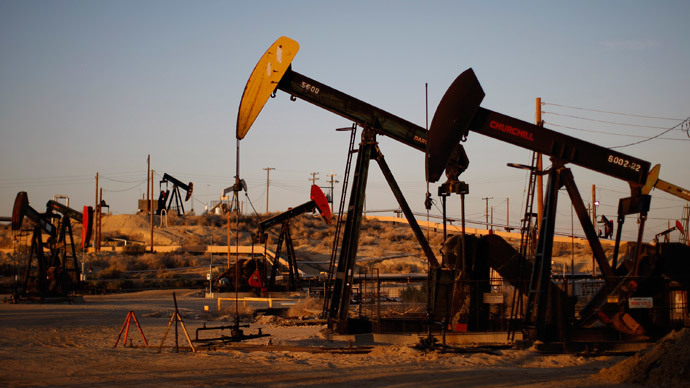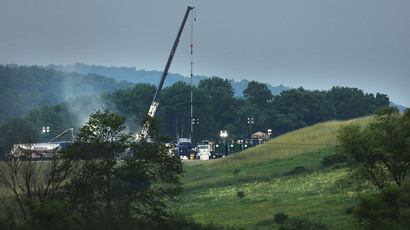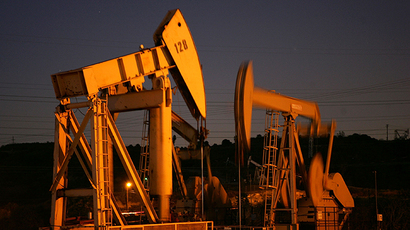Some 2,500 earthquakes in Oklahoma linked to fracking

The last five years have seen Oklahoma experience more than 2,500 earthquakes – the vast majority of which are being connected to the oil and gas exploration process of fracking.
Although past studies have also suggested Oklahoma’s earthquake spike is related to fracking, this is the first time scientists have pinned such numbers to the controversial procedure. Notably, they found that fracking could also be responsible for earthquakes occurring nearly 20 miles away from drilling and waste deposit sites.
According to Scientific American, Oklahoma has seen more than 230 earthquakes registering magnitudes of 3.0 or higher in this year alone. Before 2008, the state only averaged one of these earthquakes a year.
In a report published by the journal Science, researchers from Cornell University and the University of Colorado found that roughly 20 percent of all the earthquakes that occurred in the central and eastern United States were caused by activity at just four fracking wells situated near the town of Jones, Oklahoma.
“It really is unprecedented to have this many earthquakes over a broad region like this,” study co-author Geoffrey Abers said to the magazine. “Most big sequences of earthquakes that we see are either a main shock and a lot of aftershocks or it might be right at the middle of a volcano in a volcanic system or geothermal system. So you might see little swarms but nothing really this distributed and this persistent.”
Although the new research highlights the connection between fracking and seismic activity, it’s not the oil extraction process itself that is to blame. In order to release underground oil and gas, fracking involves the injection of highly pressurized water, sand, and chemicals into layers of rock, but it’s actually the next step that’s causing concern among geologists.
After a well is fracked, the leftover wastewater is then injected back into the ground and stored in deep wells, some of which are placed along fault lines. This process is believed to alter the stress levels on existing fault lines to the point where they fail and cause earthquakes.
“We view the expanding Jones earthquake swarm as a response to regionally increased pore pressure from fluids injected at the (southeast Oklahoma City) wells,” the study reads, according to the Los Angeles Times. When the pressure keeps mounting, “critically stressed, optimally oriented faults are expected to rupture first.”
Already, the US Geological Survey notes that “the injected wastewater counteracts the frictional forces on faults and, in effect, ‘pries them apart’, thereby facilitating earthquake slip.”
Notably, researchers also suggested that activity at these types of injection wells could induce earthquakes miles away from their location.
“The important thing is that we are seeing earthquakes that are much more widely distributed, much farther from wells and in a lot of different directions,” Abers told Scientific American. “Some of these earthquakes are as much as 20 miles away from what seems to be the primary wells that are increasing the pressure.”
The study did not make a definitive statement regarding the cause of all these earthquakes, but it did conclude that wastewater injection is “likely responsible” for the spike. Verifying the source conclusively could help regulators determine whether or not changes could alleviate some of the concern behind the process, especially since some scientists believe the current wave of relatively small quakes could lead to far bigger and more destructive tremors.
“I think ultimately, as fluids propagate and cover a larger space, the likelihood that it could find a larger fault and generate larger seismic events goes up,” Western University earth sciences professor Gail Atkinson said back in May, according to ThinkProgress.
As RT reported previously, Oklahoma has already experienced more than 500 earthquakes of any magnitude in 2014. Studies in Texas have also shown increased seismic activity to be related to fracking, while regulators in Colorado temporarily halted the disposal of fracking wastewater after research linked a recent quake to a local oil operation.















